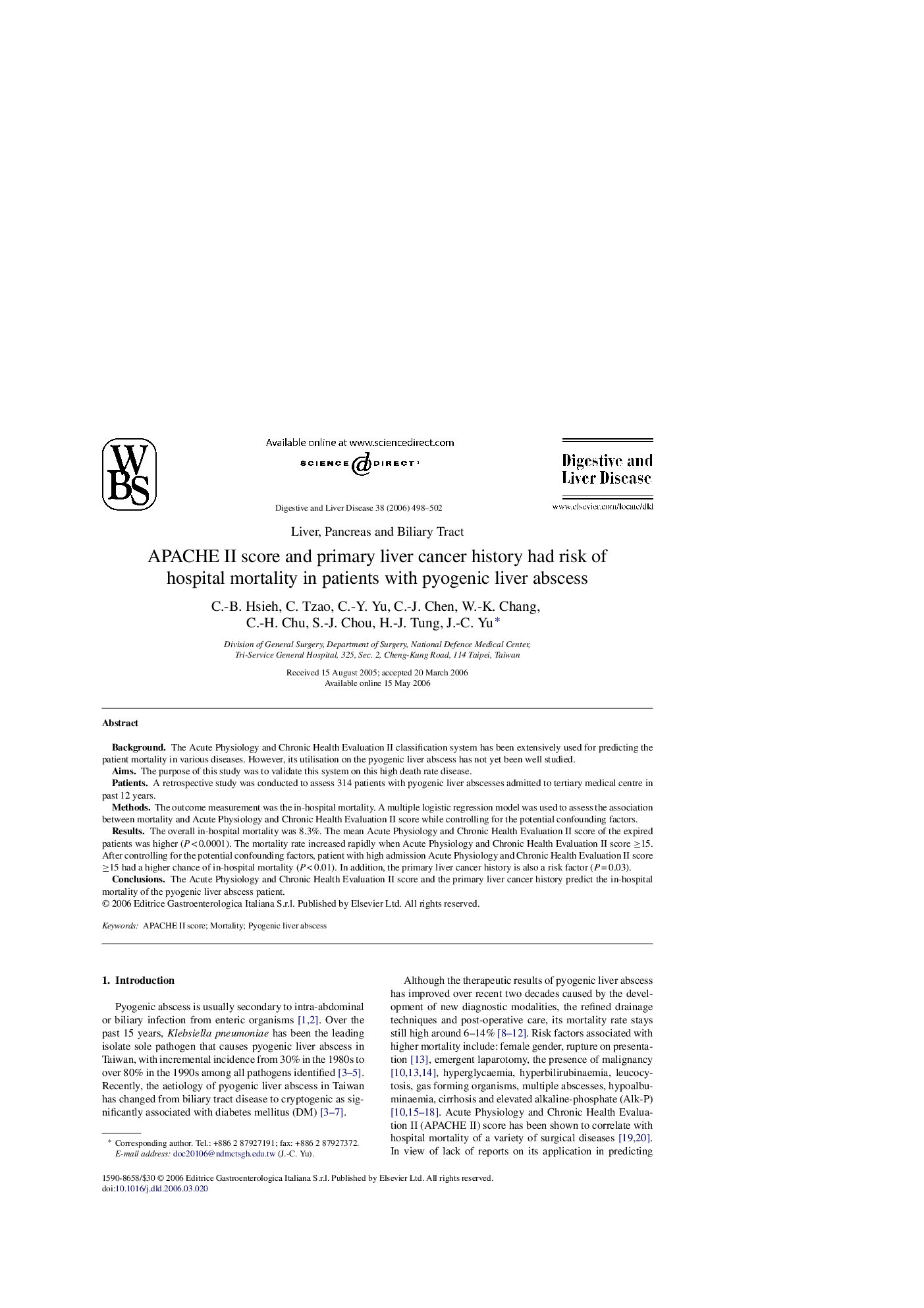| Article ID | Journal | Published Year | Pages | File Type |
|---|---|---|---|---|
| 3266725 | Digestive and Liver Disease | 2006 | 5 Pages |
BackgroundThe Acute Physiology and Chronic Health Evaluation II classification system has been extensively used for predicting the patient mortality in various diseases. However, its utilisation on the pyogenic liver abscess has not yet been well studied.AimsThe purpose of this study was to validate this system on this high death rate disease.PatientsA retrospective study was conducted to assess 314 patients with pyogenic liver abscesses admitted to tertiary medical centre in past 12 years.MethodsThe outcome measurement was the in-hospital mortality. A multiple logistic regression model was used to assess the association between mortality and Acute Physiology and Chronic Health Evaluation II score while controlling for the potential confounding factors.ResultsThe overall in-hospital mortality was 8.3%. The mean Acute Physiology and Chronic Health Evaluation II score of the expired patients was higher (P < 0.0001). The mortality rate increased rapidly when Acute Physiology and Chronic Health Evaluation II score ≥15. After controlling for the potential confounding factors, patient with high admission Acute Physiology and Chronic Health Evaluation II score ≥15 had a higher chance of in-hospital mortality (P < 0.01). In addition, the primary liver cancer history is also a risk factor (P = 0.03).ConclusionsThe Acute Physiology and Chronic Health Evaluation II score and the primary liver cancer history predict the in-hospital mortality of the pyogenic liver abscess patient.
